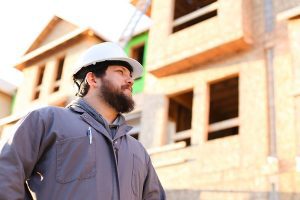From the foundation to the very last finishing touch, how can home builders like you build better houses for your customers? If you’ve been feeling stuck in your business, consider trying one of these 4 tips. They might just inspire you to try something new.
Smart Home Technology
Smart home technology is increasing in popularity, and you might find that your own customer base appreciates a new home equipped with the latest tech. The amount of available options can be overwhelming, but doing some background research before you start installing will make things easier. Check out some popular tech people expect in new homes.
Optimum-Value Engineering
Optimum-value engineering (OVE) is also called advanced framing, and the goal is to use the minimum amount of lumber necessary when framing a structure.
There are a number of measures you can take when framing a house in this manner, including:
- Switch from three-stud corners to two-stud corners with drywall clips
- Get rid of jack studs (use support headers with steel clips instead).
- Use ladder blocking at partition intersections
Some builders implement every piece of the plan and others piecemeal a solution that works best for them. Read more about the pros and cons of OVE here.
You Build it, We'll back you up.
Learn why 1 in 5 new homes nationwide are covered by a 2-10 HBW Structural Warranty.
Green Building Practices
Many homeowners also value an eco-friendly and energy efficient home. OVE is one green building practice you can implement, though there are many, many more. For instance, you might consider xeriscaping over turf grass.
Before you dive headfirst into the world of green building be sure to evaluate your local market. For example, solar panels aren’t universally well loved everywhere in the US.
Extra TLC for Foundations, Including a 2-10 Structural Warranty

Builders should always spend the time, effort, and money needed to ensure their foundations are stable and protected. Structural defects are bound to occur if you build enough homes throughout your career. Warranty coverage, like the kind you can get with an industry-leading structural warranty administered by 2-10 Home Buyers Warranty (2-10), can help mitigate those risks.
Whether you build luxury homes, volume builds, or otherwise, 2-10 can likely help you protect your profits, promote your quality, and plan for a successful future by controlling what’s behind you. With 1 in 5 new homes in the US covered by a 2-10 Structural Warranty, more builders trust 2-10 for unmatched risk management solutions.








